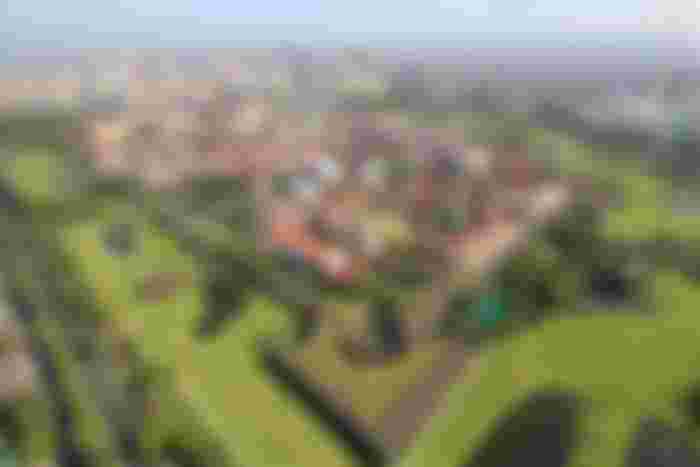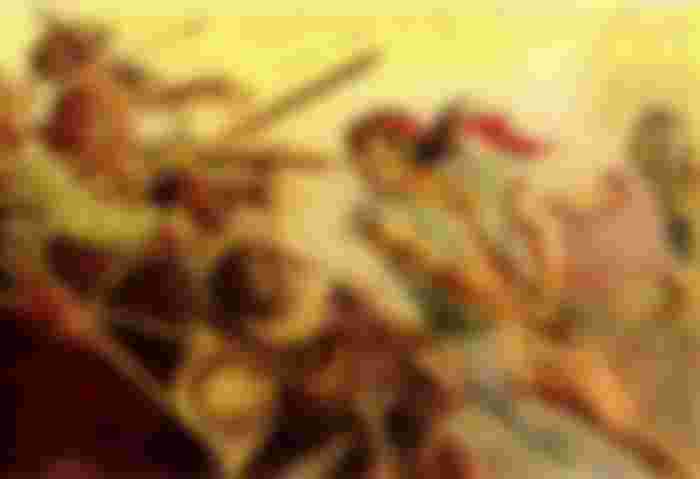In my previous article, I discussed 2 explorations commissioned by the Viceroy of New Spain to search for the Islands of the West. Villalobos was captured by the Portuguese when they reached Leyte & Samar to create a settlement for the empire, until he died in exile at Amboyna, Indonesia.
Legazpi's expedition wanted to be peaceful as he made alliances with the Rajahs & Datus within the Visayan Islands until he was challenged and killed hundreds of men. After the assault of Legazpi's forces, the oldest Catholic artifact in the Philippines survived, inside of a pine box.
The image of Santo Niño de Cebu was miraculous. It became the island's patron and they celebrate it annually after the holiday season up to this day. Now, let's continue on Miguel's exploration from the island of Panay to up north in Luzon.
Panay, and up north to Luzon
Miguel moved his forces in 1569 to the island of Panay after building the town in Cebu in honor of Santo Niño, which the Portuguese and the Spaniards don't get along with. The moment they're in Panay, they were peacefully welcomed by the Kedatuan of Madja-as (Confederation of Madya-as).
They formed a second settlement called Capiz (now City of Roxas). Eventually, he returned to Cebu when reinforcements were sent from Spain. Miguel became the governor and was given the title Adelantado (Advanced). Aside from the reinforcements, El Adelantado was given a message to begin his conquest up north to Luzon.

Luzon has rich resources, so Miguel sends Martin de Goiti to explore the northern region in 1570. Martin along with 120 men landed in Batangas as they explored the Pansipit River leading to Taal Lake. They arrived in Manila Bay on May 8, 1570, from there they were welcomed by the natives.
Martin's forces camped in Manila for a few weeks as they allied with Rajah Ache (or known as Rajah Matanda). Miguel wants to use the harbor to create a base, then trade with the Chinese. But the Rajah's ally, the young Bambalito of Macabebe, asked Rajah Soliman to revoke his alliance with the Spaniards. Rajah Matanda refused.
Rajah Sulayman gave conditions for Bambalito if they're able to take down 50 Spaniards, he would revoke his alliance with Legazpi, and the Rajah would help to expel the conquerors. Bambalito went back to Macabebe and formed 2,500 Moros gathered from the villages along Manila Bay, Macabebe, and Hagonoy.

Bambalito along with his Moro fleet sailed to Tondo and encountered the Spanish fleet, but his fleet suffered during the Battle of Manila Bay in 1570. After disputes and hostility had erupted between the two groups, the Spaniards occupied the Islamic States of Tondo and Maynila.
After their occupation of both states, more reinforcements arrived, prompting Miguel to leave Cebu for Panay, and then Luzon. Miguel formed a truce with the native councils and to our local rulers, Rajah Sulayman, and Lakan Banaw Dula. Both groups agreed to create a city council, consisting of 2 mayors, 12 councilors, and a secretary.

El Adelantado established a new settlement on June 24, 1571, followed by the construction of Intramuros. Hence, it is now called Manila (originally Maynila) and declared as Luzon's capital and the seat of the Spanish East Indies. After Bambalito's defeat, Miguel sends his men up to the northern villages of Manila.
As Luzon & the Visayas region are now in the hands of the Spaniards, from natives converting their religious views to Catholicism with the help of the Augustinian missionaries. El Adelantado established a government on these islands and became the 1st Spanish Governor of the Philippines.
Death of El Adelantado

Miguel governed the Philippines for a year before his death on August 20, 1572. His cause of death was a sudden stroke. He died bankrupt, leaving a few pesos behind since he shouldered his own fortune for the expedition. He is laid to rest at San Agustin Church, Intramuros, Manila.
After Legazpi's death, the Spanish encountered strong resistance from the Muslims on Mindanao, the Zambal Tribe of Zambales, the Igorots from the Cordillera Mountains, and the Wokou pirates from China & Japan. Guido de Lavezaris became the 2nd Governor-General of the Philippines.
In 1574, Lakan Dula and Rajah Sulayman resisted the Spanish government (known as the Tagalog Revolt). Both leaders oppose Legazpi because he promised that they'll be retained of their local authority, be exempted from paying tribute, and fair treatment. Legazpi didn't fulfill his word to our local leaders.

When Laverzaris became Governor-General, he revoked their exemptions from paying tributes and confiscated their lands. They were convinced by a priest to stop the revolution, but Sulayman refused and continued to fight until his last breath.
From a peaceful expedition with forging alliances to our local leaders of that time, and their conquest to establish a settlement on both regions, including their abusive methods to our ancestors is just the beginning. The Tagalog Revolt was the second uprising during the 16th century.
In my next article, I'm going to discuss the revolutions and a few key figures of our history from my previous articles then discover other revolts from the last 3 centuries.




